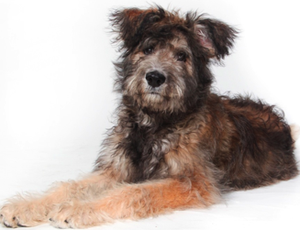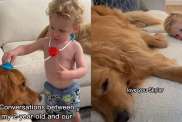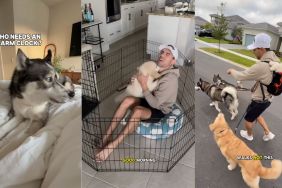Once you have chosen your new puppy, the whole family will surely be excitedly anticipating his or her arrival into their new home. The pup’s first days will go smoothly and safely if you abide by the old saying that preparation is key to success. Much like preparing for a human baby, there are necessities to be purchased and puppy proofing to be done before the pup sets a paw down in their new forever home.
Map Out a Puppy Plan
It’s important to decide what will be expected of your pup prior to bringing him home. A young puppy is highly impressionable and the first weeks with their new family will set the standard for future behavior, so it is best to guide your puppy towards good manners from the start. By clearly defining what the rules will be you are sure to make the integration of your pup into your family as smooth and stress free as possible.

Select who will be responsible for specific tasks (such as watering, feeding, and walking the pup), and outline the specifics of how you want your pup to behave and interact with people. If the pup is to learn to sit to greet (as opposed to jumping up), to get on the couch only when invited, to refrain from nipping people in play, then everyone must agree in order to avoid sending mixed messages.
While it will take some time to get to know your pup’s preferences and elimination schedule, it is also advisable to create a Daily Puppy To Do List so that everyone is on a schedule in regards to puppy care.
Create Safe Confinement Areas
Careful management is the key to keeping a puppy safe and setting good habits from day one. Your pup should be on a leash and carefully supervised when you spend time with her (this way they are not able to wander about and make mistakes or hurt themselves by chewing electrical cords or other dangerous objects).
When you cannot supervise your pup for short periods, they can rest in a suitably sized crate. You will also need to set up an area for them to rest when you need to leave them for longer than they can ‘hold it’ in the crate. This long-term confinement area will have an indoor potty spot and can be created using an exercise pen or a baby gate. To begin, the floor of this area should be completely covered with the intended substrate (surface on which you want your pup to eliminate). As your pup develops a preference for this surface you will gradually reduce the area covered over a matter of weeks.
Puppy Proof Your Home
While your puppy will be carefully supervised and managed using on leash supervision, the crate and a long-term confinement area, mistakes may happen. Therefore, be sure to do a thorough check of your home to make the environment as safe as possible should your pup be allowed to accidentally wander about to investigate. Electrical cords, cleaning detergents, sponges, curtain drawstrings, candles, potpourri, candy dishes, jewelry, medications, plants, shoes, garbage pails, and any other potentially dangerous or valuable items should be out of reach.
Andrea Arden is an animal behavior counselor, rescuer, author, speaker, and a resident pet expert on the Today Show. For more information, check out her website, AndreaArden.com.









